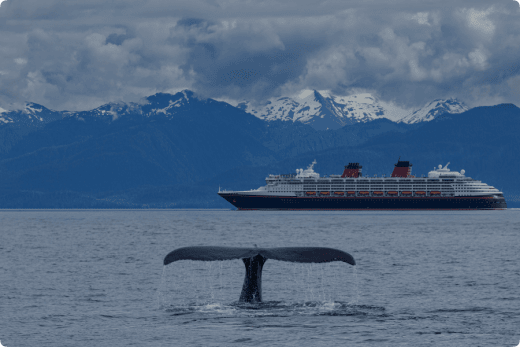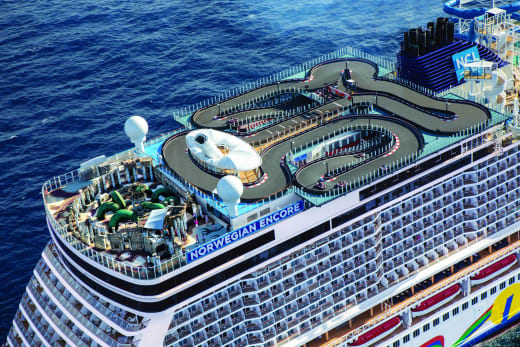Best cabin on a cruise ship – How to choose the perfect stateroom for your cruise style

Choosing the best cabin on a cruise ship affects far more than where you sleep – it determines how easily you get around the ship, whether you wake up to ocean views or inside darkness, and how comfortable your cruise feels overall. Understanding which cabin is best on a cruise ship can minimize motion sickness, improve your sleep, and elevate your onboard experience without overspending. Whether you’re a couple looking for a luxurious balcony, a family needing extra space, or a budget traveler focused on practicality, we’ll help you figure out how to choose the best cabin on a cruise ship based on real-world factors that can impact your cruise experience.
On this page:
- Understanding cruise cabin categories
- The importance of cabin location
- Cabin recommendations by cruise style & traveler type
- FAQs: Real questions from Cruisebound travelers
- Cruise line-specific cabin tips
- Final cabin selection checklist
Thinking of booking a cruise? Let’s find the cabin that fits your travel style perfectly:
Related: Best cruise destinations for 2025
Understanding cruise cabin categories
Before choosing a location or layout, it’s important to understand the four major cabin types available on most ships. If you’ve ever asked, what are the best cabins on a cruise ship, the answer starts with knowing what each category actually provides.
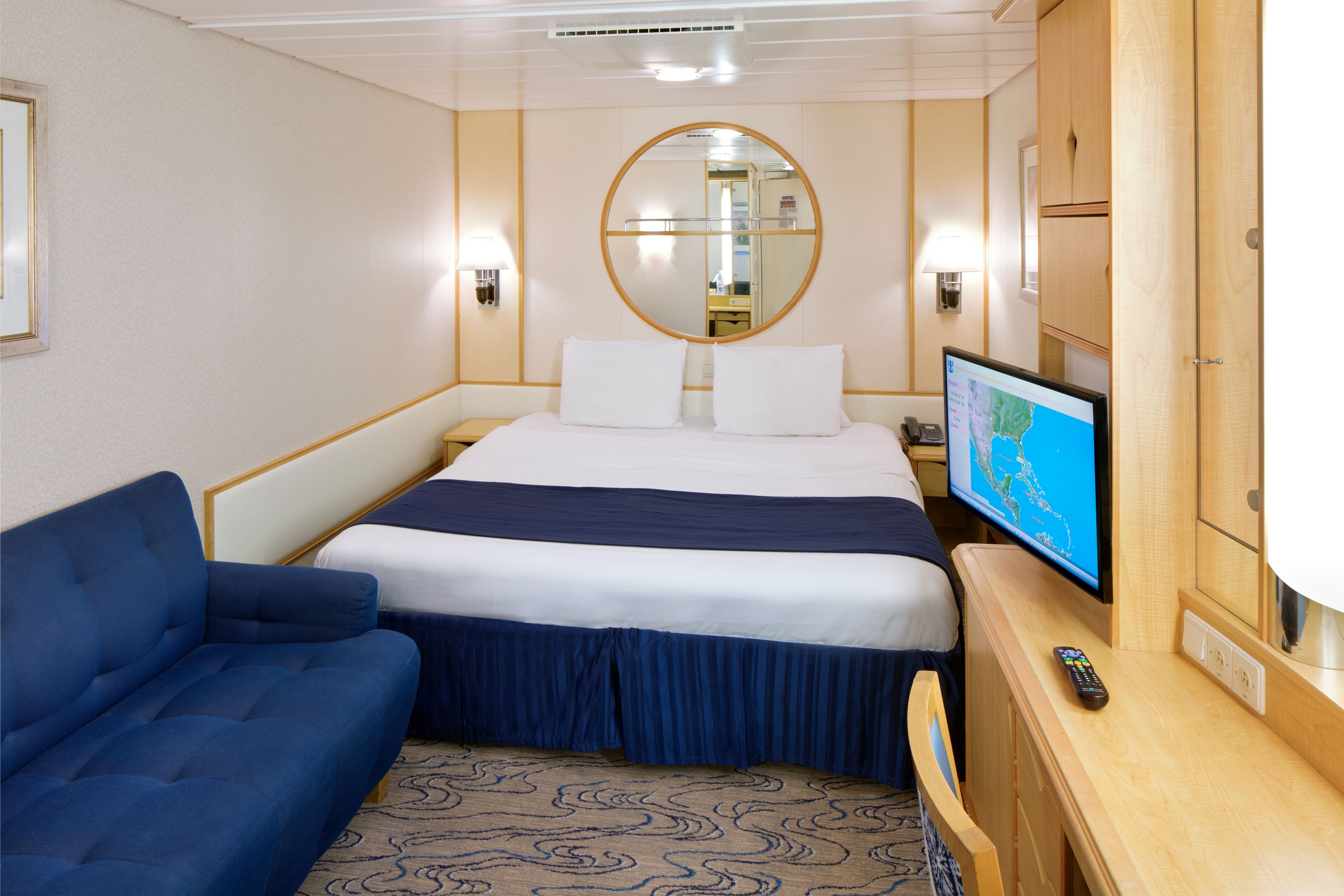
- Inside cabins: These windowless rooms are the most affordable. They’re typically located on the lower and middle decks, often in the ship’s interior corridor, away from windows and balconies. Inside cabins are ideal for guests who prioritize cost over view or plan to spend most of their time enjoying ship amenities.
✅ Ideal for solo travelers.

- Oceanview cabins: A step up from inside, these rooms include a window or porthole to the outside. Oceanview cabins are usually found on lower to mid-level decks along the outer edges of the ship. On many ships, they’re located just above the waterline, offering a horizon view without the premium price of a balcony.
✅Great for couples who need space without the extra cost.

- Balcony cabins: These are among the most popular choices and often feel more open thanks to natural light and private outdoor space. Balcony cabins are generally placed on mid to upper decks, along both the port and starboard sides of the ship. Many are positioned just above the lifeboat level, though some premium balconies are higher for better views.
✅Perfect for groups and families needing extra space.
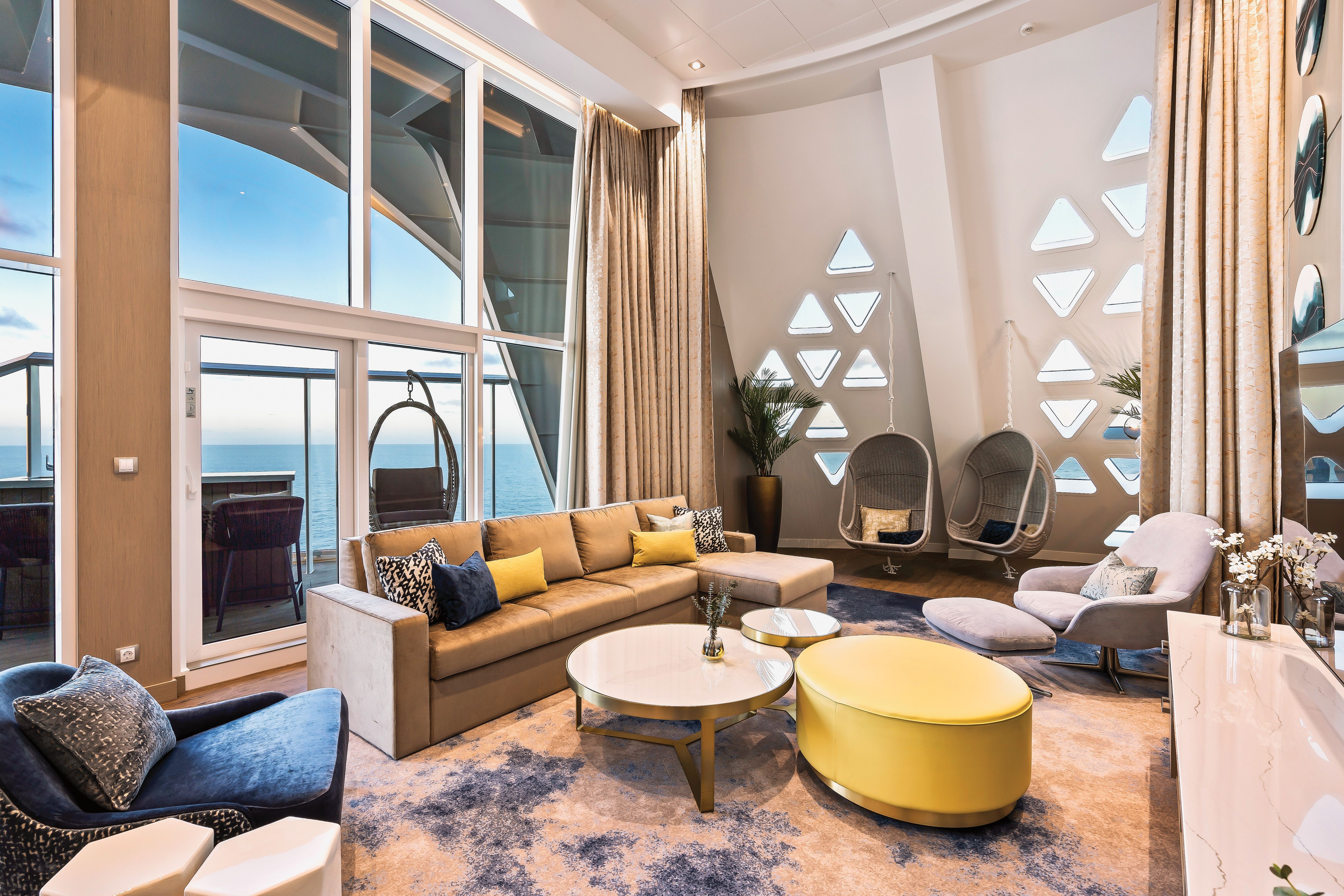
- Suites: Suites come in a wide range of layouts—from junior suites to multi-room retreats—and often include perks like concierge service, early boarding, and access to exclusive venues. Suites are usually located on upper decks, often at the front or aft of the ship for panoramic views. On ships with luxury enclaves like Norwegian’s Haven or MSC’s Yacht Club, suites may be grouped in a private-access section with its own elevator and amenities.
✅Ideal for cruisers wanting an upscale cruising experience.
The importance of cabin location
Even the most upgraded cabin can be a disappointment if it’s in the wrong spot. Choosing the best cabin location on a cruise ship means considering how motion, noise, and deck height will affect your experience.
Midship cabins
Midship cabins are centrally located and are often considered the most stable part of the ship. This makes them the best cabin position on a cruise ship for those prone to seasickness. Being at the center reduces the feeling of motion, especially in rough seas. Additionally, midship locations offer convenient access to various ship amenities, reducing the distance to dining areas, theaters, and pools.
Pros:
Reduced motion sensation, ideal for motion-sensitive passengers
Central location offers easier access to ship facilities
Cons:
High demand can lead to higher prices
Proximity to elevators may result in increased foot traffic and noise
Forward cabins
Cabins located near the front (bow) of the ship can experience more motion, particularly in rough seas, which might not be suitable for those prone to seasickness. However, they often provide unique and panoramic views, especially when entering ports. Some forward cabins may have larger windows or unique layouts.
Pros:
Spectacular forward-facing views
Often quieter due to less foot traffic
Cons:
Increased motion sensation, not ideal for motion-sensitive passengers
Longer distance to aft amenities like dining rooms and pools
Aft cabins
Aft cabins are located at the rear of the ship and are popular for their wake views and often larger balconies. They can be ideal for scenic cruising destinations. However, they may experience more vibration and engine noise.
Pros:
Stunning views of the ship's wake
Often larger balconies and quieter surroundings.
Cons:
Potential for increased vibration and engine noise
Longer walks to forward ship amenities
Deck level considerations
Lower decks: Tend to experience less motion, making them suitable for those prone to seasickness. However, they may be farther from amenities like pools and dining areas.
Upper decks: Closer to pools, buffets, and sun decks, offering convenience. However, they may pick up noise from public areas above and are more susceptible to motion.
Cabins below public venues: Cabins located directly below theaters, pools, or nightclubs can be noisy. It's advisable to check the ship’s deck plans to avoid these areas.
The best cabin placement on a cruise ship balances your motion sensitivity, noise tolerance, and convenience. Mid-deck cabins with rooms above and below (no public venues nearby) are often a safe choice for light sleepers.
Cabin recommendations by cruise style & traveler type
Not every cabin is suited for every cruiser. The right choice depends on what matters most–quiet surroundings, motion stability, or maximizing value. From view and deck level to layout and proximity, location makes a measurable difference.
For couples seeking comfort & quiet

Choosing the best balcony cabin on a cruise ship starts with location and layout. Aft-facing balconies are among the most sought-after for their panoramic views and reduced hallway noise. These cabins, found on ships like Celebrity Beyond and Holland America’s Koningsdam, overlook the ship’s wake and are often tucked away from crowds.
Concierge-level cabins add premium touches like access to private lounges and early embarkation. On Celebrity Cruises, for instance, Concierge Class balconies include priority dining reservations and welcome gifts without upgrading to a suite. Upper-deck suites–such as the Club Class Mini-Suites on Princess Cruises’ Caribe Deck–offer more privacy and partial shade, with fewer people walking by your door.
The best location for a cabin on a cruise ship for comfort-focused guests is usually an aft or forward-facing balcony on a higher deck, away from elevators and public venues, with other staterooms directly above and below to buffer sound.
For families
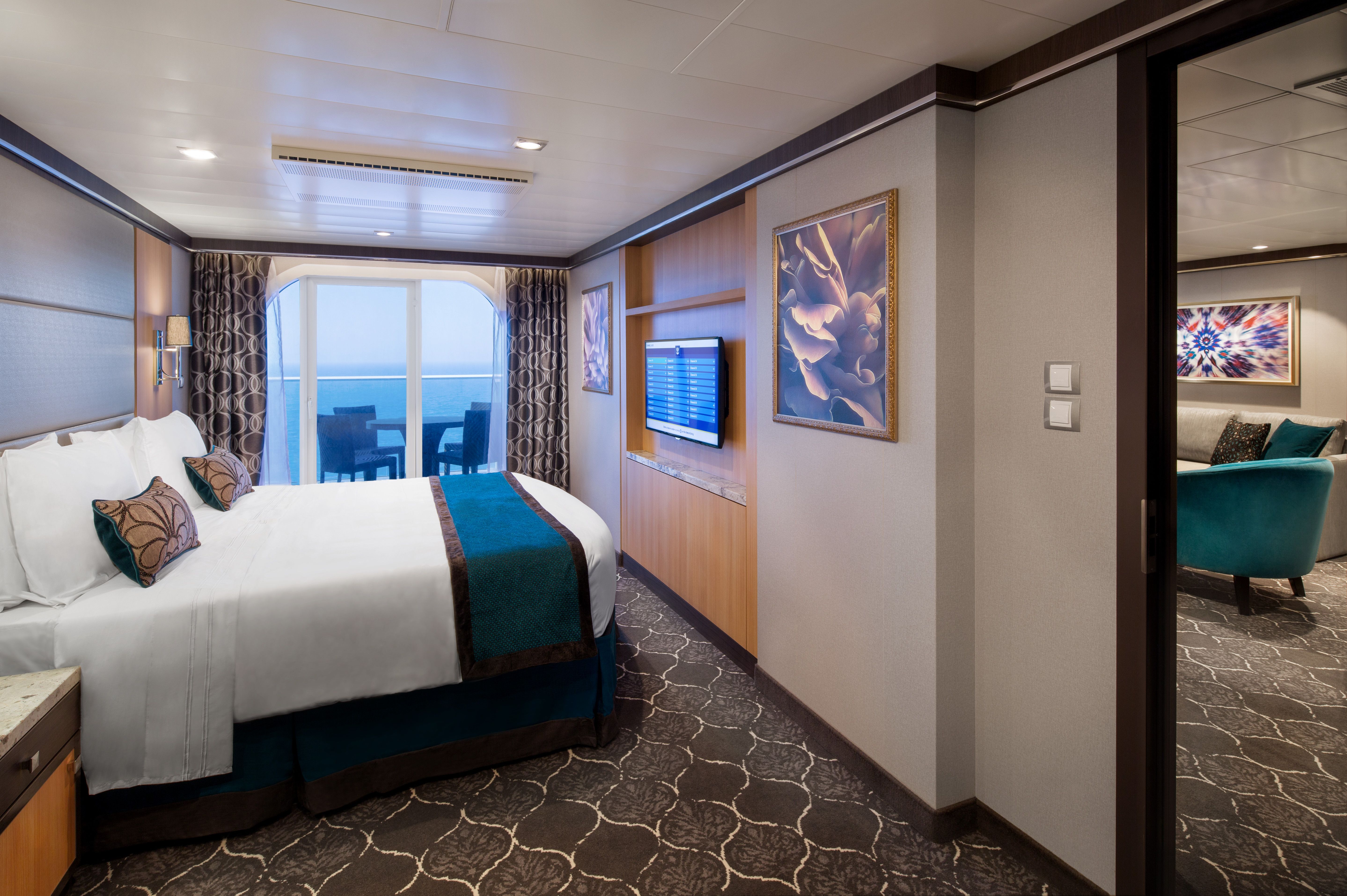
When cruising with children or in a group, stability and space come first. The best cabin for motion sickness is midship on a lower deck, where movement from waves is minimal. These cabins are especially helpful on open-sea itineraries like transatlantic crossings or early-season Alaska cruises.
Family-friendly cabins on Carnival’s Mardi Gras or Royal Caribbean’s Wonder of the Seas include connecting rooms and larger layouts. Carnival’s Family Harbor staterooms, located on Deck 2 midship, also provide access to a private lounge with snacks, games, and family programming.
The best cabin level on a cruise ship for families is typically between Decks 5 and 7–low enough to reduce motion but centrally located for easier access to dining, theaters, and kids' clubs. On Norwegian Cruise Line’s Breakaway-class ships, for example, family cabins are grouped near Splash Academy, reducing long walks with strollers or beach bags.
For eco-conscious or budget-savvy travelers
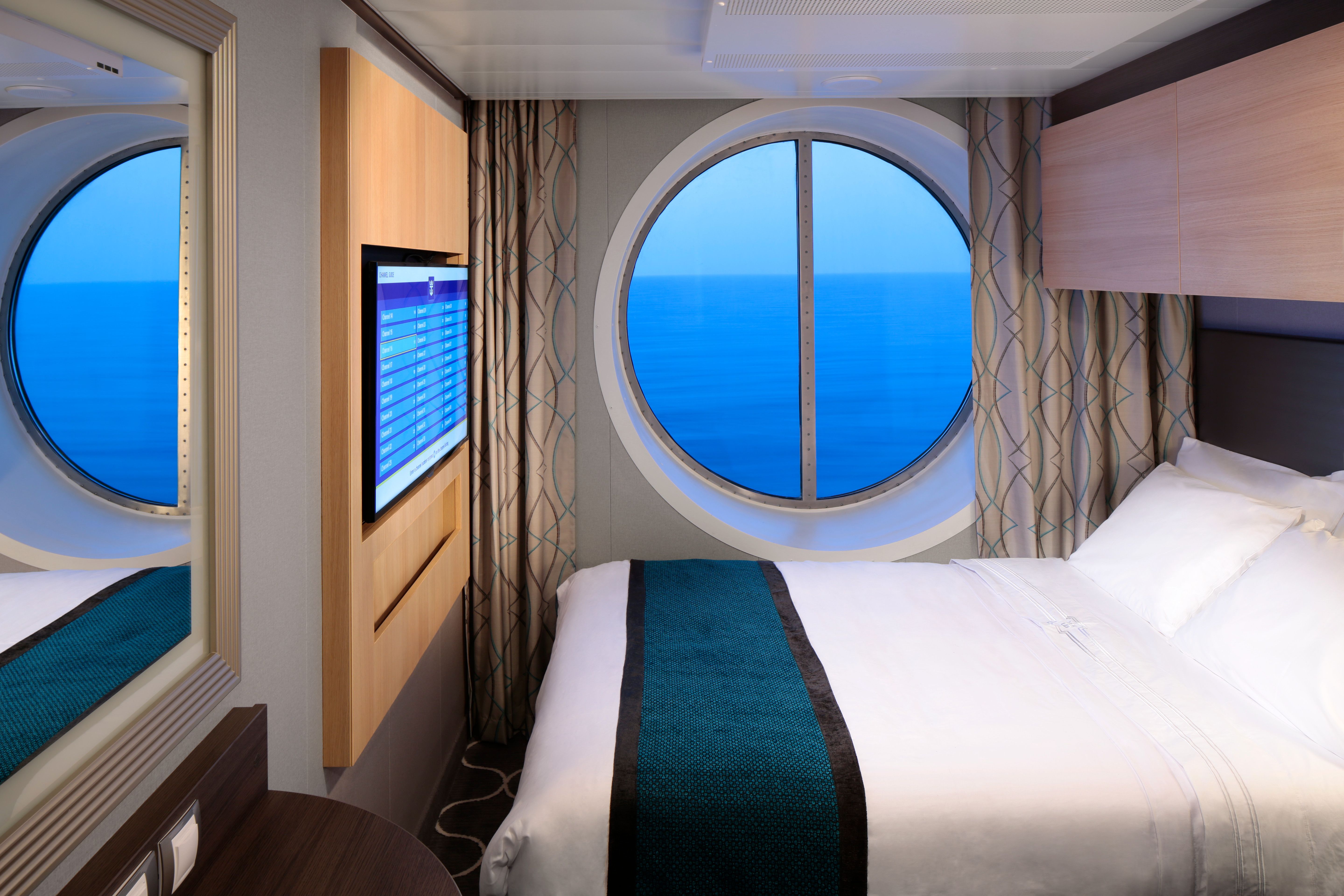
Inside cabins remain a smart choice for guests looking to reduce costs or minimize energy consumption. The best inside cabin on a cruise ship is midship on a mid-level deck, ideally close to elevators and far from noisy venues.
Royal Caribbean’s Anthem of the Seas features Virtual Balcony cabins–interior rooms with real-time views of the ocean displayed on HD screens. Norwegian’s Studio Inside cabins offer a compact, well-designed space for solo travelers, complete with access to a private lounge.
The best center cabin on a cruise ship is typically located on Deck 6 or 7, surrounded by other cabins to buffer noise and limit motion. These rooms offer easy access to both forward and aft venues while staying close to the ship’s most stable point.
Special scenarios and destination-based cabin advice
Some destinations come with unique cabin considerations. If you're sailing through glacier fields or prone to seasickness, the direction your cabin faces–or its deck placement–can make a significant difference. Let’s look at how to choose the best cabin on a cruise ship to Alaska, for example.
Alaska: If you’re heading southbound, a starboard balcony provides continuous shoreline views. Northbound? Choose port side. Either way, balconies give you front-row seats to glacier calving and wildlife sightings.
Antarctica: Stability trumps scenery. A midship cabin on a lower deck handles the Drake Passage more smoothly. If possible, choose a forward-facing cabin with a large picture window for watching icebergs from your bed.
Motion-sensitive travelers: The best cabin for seasickness is always midship on a lower deck. Oceanview rooms in this area provide a view without the sway of higher decks.
For Caribbean and Mediterranean cruises, cabin side matters less, as the ship constantly changes direction. Instead, prioritize shade or sun on your balcony, depending on the time of year and your itinerary.
FAQs: Real questions from Cruisebound travelers

When it comes to cabins, small details make a big difference. These are the most common questions Cruisebound users ask.
1. What is the best cabin position on a cruise ship?
For the most stability and quiet, the best cabin position on a cruise ship is midship on a lower or middle deck. These cabins are close to the ship’s center of gravity and experience the least motion. On Royal Caribbean’s Freedom-class ships, midship cabins on Deck 6 are buffered by other staterooms, helping reduce noise from public areas.
2. Where is the best cabin on a cruise ship?
The best cabin on a cruise ship really depends on what matters most to you. If you care about scenery, try an aft balcony on Deck 9. If it’s convenience, go for a midship cabin near elevators. For privacy, forward-facing suites at the front of the ship tend to be the quietest, with little hallway traffic.
3. How to choose the best cabin on a cruise ship?
Choosing the best cabin on a cruise ship starts with knowing your own preferences–like whether you get seasick, want a view, or need quiet at night. Once you’ve figured that out, use the ship’s deck plan to avoid noisy areas and find the best location for your priorities.
4. What is the best inside cabin on a cruise ship?
Not all inside cabins are created equal. The best inside cabin on a cruise ship might be a Virtual Balcony stateroom on Anthem of the Seas, where real-time ocean views are streamed to a wall-sized screen. Norwegian’s Studio cabins are another strong option, especially for solo travelers who want privacy without paying for extra space.
5. Where on a cruise ship is the best for cabins?
Some areas of the ship are better than others when it comes to cabin placement. Where on a cruise ship is the best for cabins usually means mid-level decks with no public venues directly above or below. On Celebrity Equinox, for instance, Deck 8 offers quiet and convenience, with cabins nestled between other guest rooms.
6. Which cabin is best on a cruise ship for motion sickness?
If you’re prone to seasickness, location really matters. The cabin that is best on a cruise ship for motion sickness is midship on one of the lowest passenger decks. Holland America’s oceanview cabins on Deck 4 are a good example–close to the waterline, stable, and with a window to help your sense of balance.
Cruise line-specific cabin tips

Each cruise line has its own quirks when it comes to staterooms. If you’ve been searching what is best cabin location on a Carnival cruise ship or other cruise lines, here’s a breakdown to help you compare across top lines:
Carnival: For families, Deck 2’s Family Harbor area on Carnival’s Mardi Gras includes an exclusive lounge and rooms that sleep five. Nightlife-focused guests may prefer a balcony on Deck 6 near the Havana Bar (but be aware of music volume).
Norwegian: Haven suites sit at the top and front of Norwegian ships, with private elevators, restaurants, and sun decks. Club Balcony Suites add bathroom space and priority dining without the full Haven cost.
Celebrity: Celebrity’s edge-class Infinite Verandas expand the interior space by enclosing the balcony with floor-to-ceiling windows that slide open. Traditional balconies remain available for guests who prefer full outdoor access.
Princess Cruises: Mini-suites on Princesses’ Caribe Deck are a great value, offering a spacious layout and partial privacy on the balcony. Deluxe Balcony cabins add a sofa and extra square footage without upgrading to a full suite.
Final cabin selection checklist
Still deciding which cabin is best on a cruise ship for your situation? Use this quick checklist to make sure your choice lines up with what matters most to you. A little planning now can make a big difference once you're onboard.
Travel style: Think about who you’re sailing with. Booking as a couple? Look for balcony cabins in quiet areas or concierge-level perks. Traveling with kids or extended family? Prioritize extra square footage, connecting rooms, or family-specific layouts like Carnival’s Family Harbor staterooms or Royal Caribbean’s Ultra Spacious cabins.
Motion sensitivity: If you’re prone to seasickness, choose a cabin midship on a lower deck. These areas feel less motion, especially on open-sea itineraries like Alaska or transatlantic sailings.
Destination needs: Where you’re cruising matters. For scenic itineraries–like Alaska or the Mediterranean–a balcony adds value. If you’ll be out exploring most days (like in the Caribbean), a quiet interior or oceanview cabin could be a better use of budget.
Deck preference: Avoid cabins directly below the pool deck or above late-night venues. Staterooms “sandwiched” between other guest rooms tend to be quieter and more restful. Mid-level decks also offer quicker access to most ship features without too much noise or motion
Choose your cabin strategically, not just by price
Your stateroom choice affects far more than where you sleep–it shapes your entire cruise experience. The right location puts you steps away from your favorite spots. The right layout gives you the space and comfort you actually need. And the right view can transform ordinary sea days into memorable moments.
Consider the details that matter to you: a starboard balcony for glacier views in Alaska, a midship cabin to minimize motion if you're sensitive to waves, or a deck sandwiched between other staterooms for quieter nights. These aren't just nice-to-haves–they're the difference between a good cruise and a great one.
Ready to book your perfect cruise cabin? Book with Cruisebound today.

